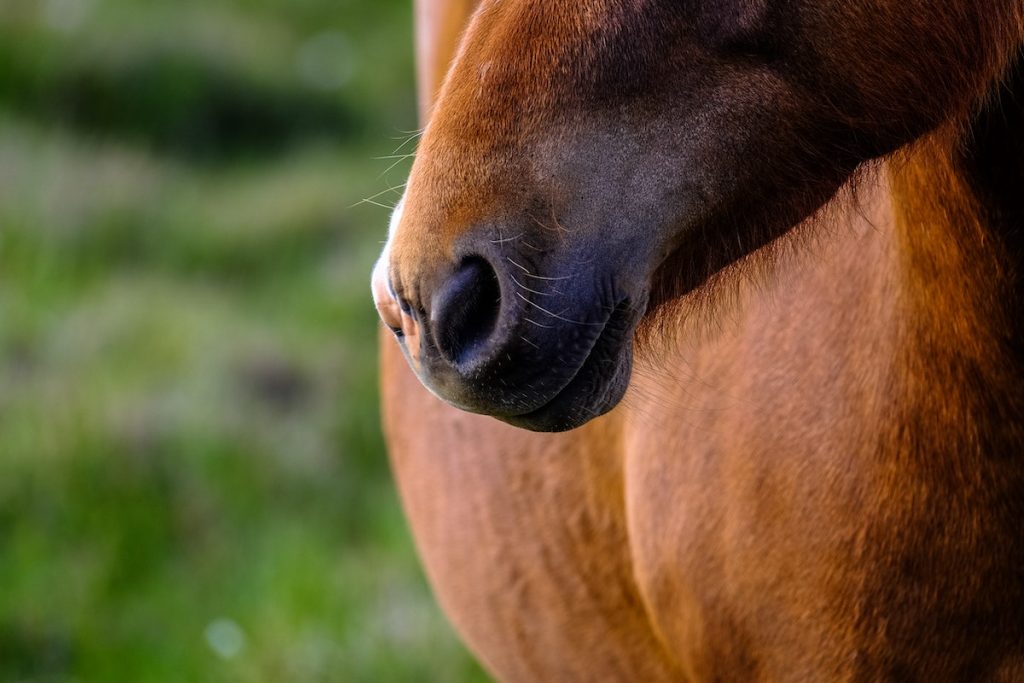As someone who has suffered from temporal mandibular joint disorder, otherwise known as TMJ, for most of my life, I came to recognize the signs early on in a mare I’ve had for nearly twenty years now. As it turns out, I’ve learned that Lee Lee isn’t the only horse with this issue. Unfortunately, TMJ in horses is more common than many people know.
The Horse’s TMJ
The TMJ joint resides just below and in front of the base of the ears on either side of the horse’s head, where the lower jaw articulates with the temporal bone. The horse’s temporomandibular joint is more complex than ours because they have moveable ears and teeth that erupt throughout their lifetime and also because the joint articulates with the hyoid bone, which is attached to other structures extending down the horse’s neck.
There are several different muscles surrounding the TMJ joint and tightness or sensitivity in these muscles can be a good indicator of pain.

Symptoms of TMJ Disorder in Horses
A number of symptoms can indicate that your horse may be suffering from a TMJ disorder. They include:
- Uneven wear of the teeth (your vet or equine dentist may notice this);
- Head tossing, especially when pressure is applied with a bit or hackamore;
- Cribbing;
- Ear sensitivity;
- Difficulty taking or wearing a bit;
- Difficulty with certain leads or gaits;
- Difficulty flexing at the poll; and
- Being head shy or sensitive in jaw area.
Causes of TMJ Disorder in Horse
Aggressive dental can trigger TMJ dysfunction with horses, but other possible causes include:
- Eating out of raised hay racks;
- Use of bits and/or restrictive nosebands;
- Improper saddle fit;
- ‘Hard’ hands of rider;
- Improper gaits caused by faulty hoof care or conformational defects;
- Emotional stress;
- Injury sustained while ‘pulling back’; and/or
- Lack of pasture grazing.
Treating TMJ Disorder in Horses
So what can be done to address TMJ disorders in horses? After you’ve examined and hopefully eliminated factors that may be contributing to the problem such as bits, dental issues, hoof trimming, feeding practices, etc., body work and/or holistic treatments may be your best bet for treatment. There are many different types of body work that can be used to relax the muscles, ligaments, and tendons in the jaw and TMJ area such as massage, acupressure, acupuncture, myofascial release, and crania-sacral work. Some horses may need ongoing treatments in order to relieve symptoms.
If you notice your horse displaying signs of TMJ pain, have him or her evaluated by your veterinarian as soon as possible.
Love this blog post? Check out The Importance of Soaking Hay Pellets



